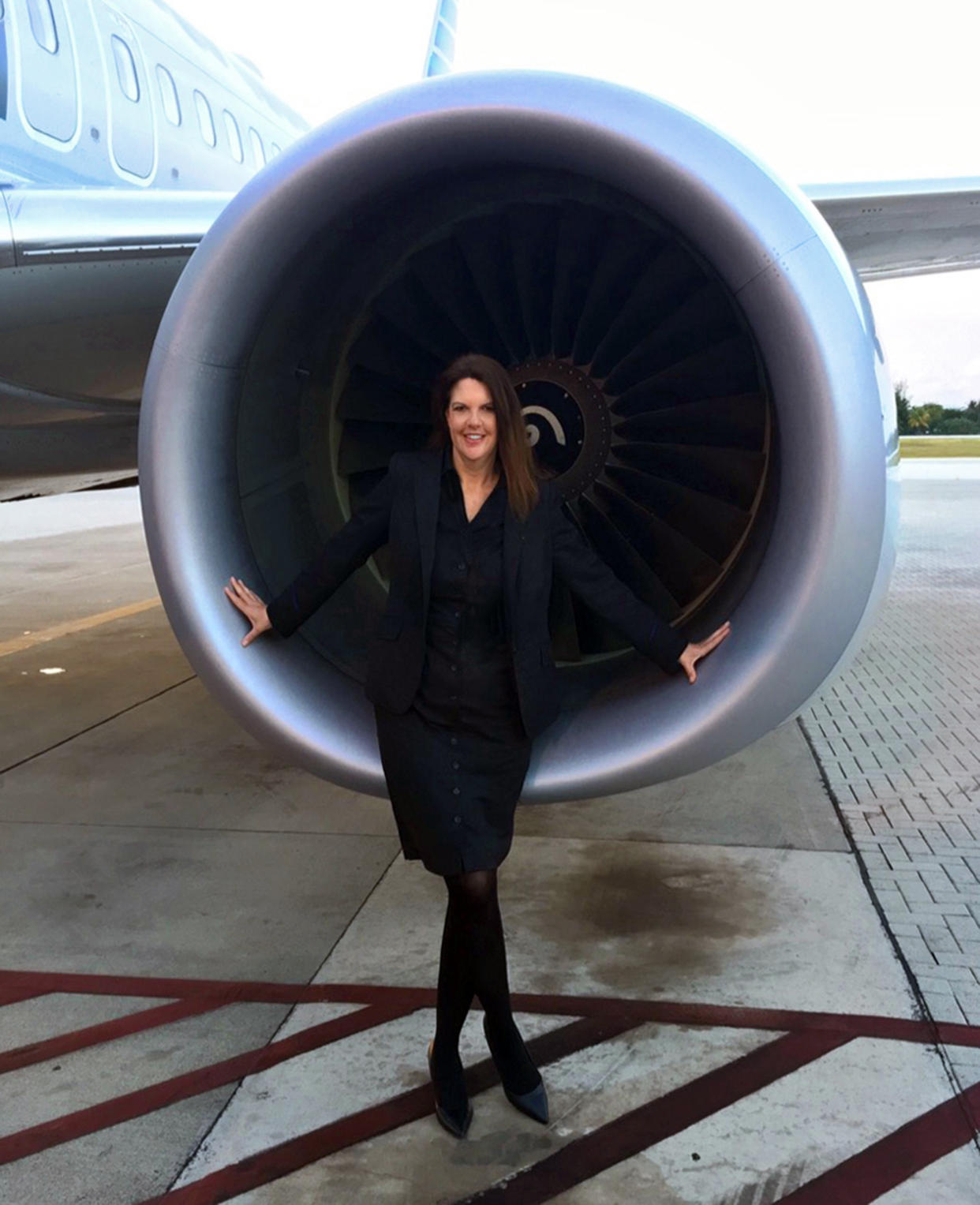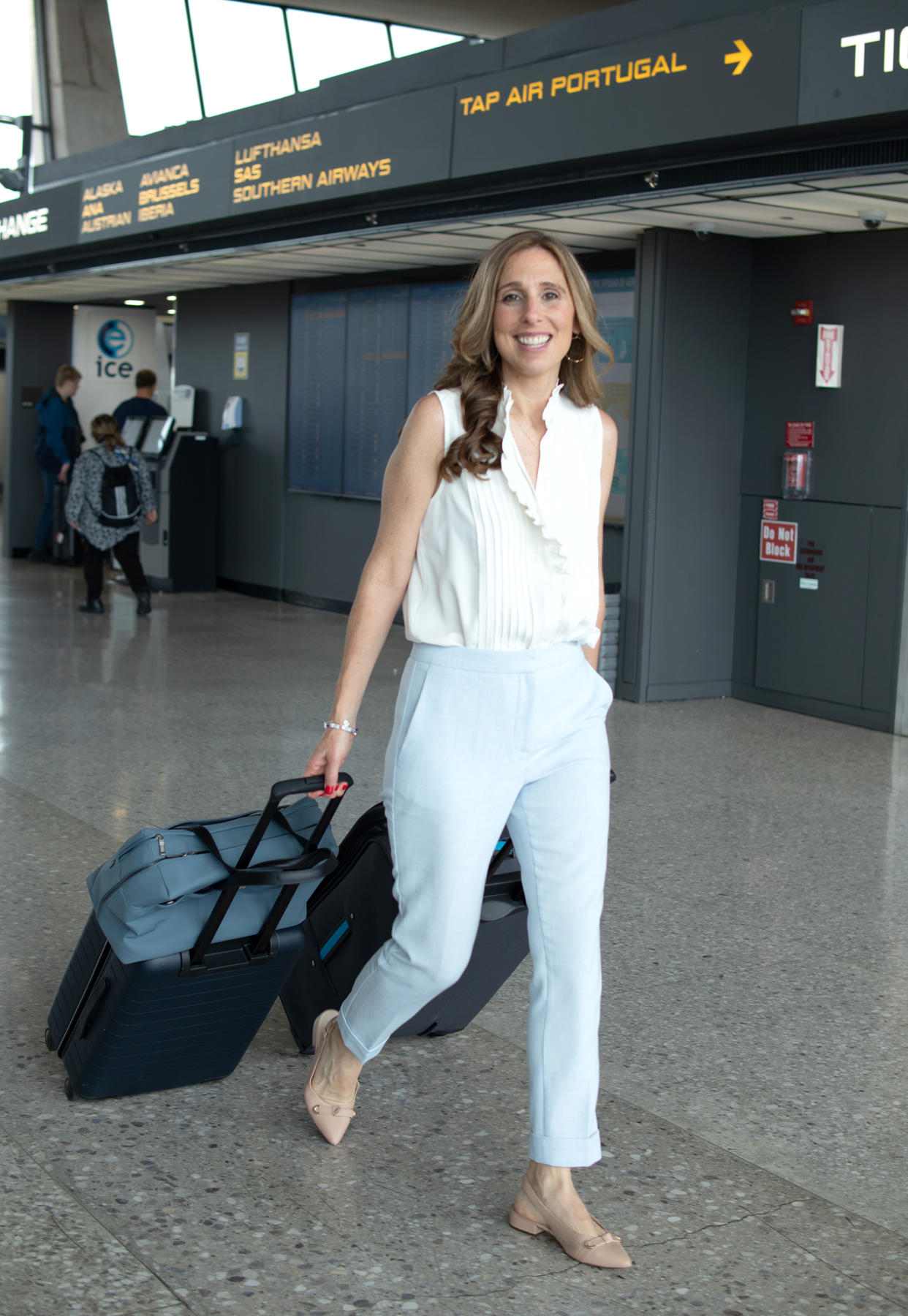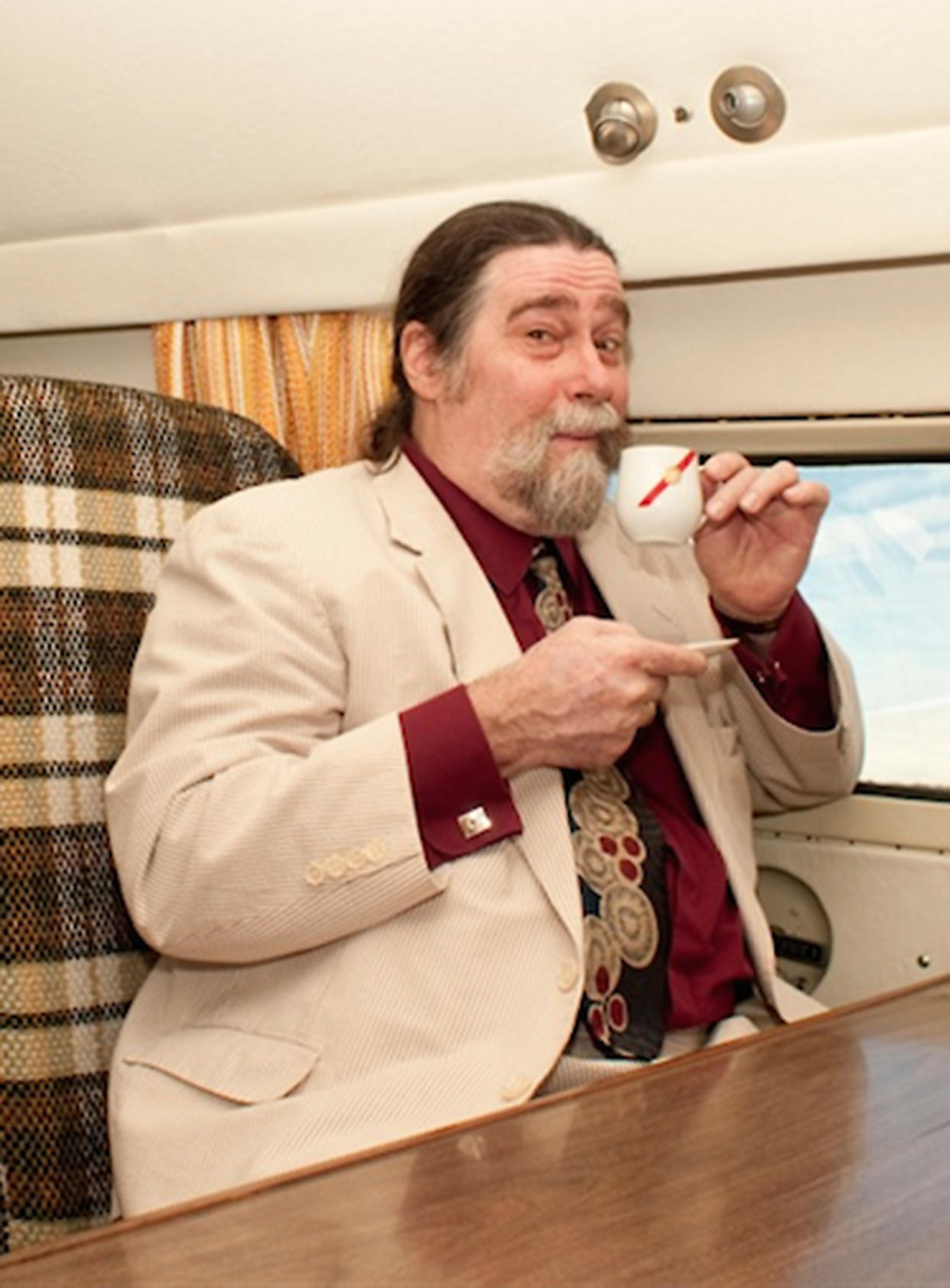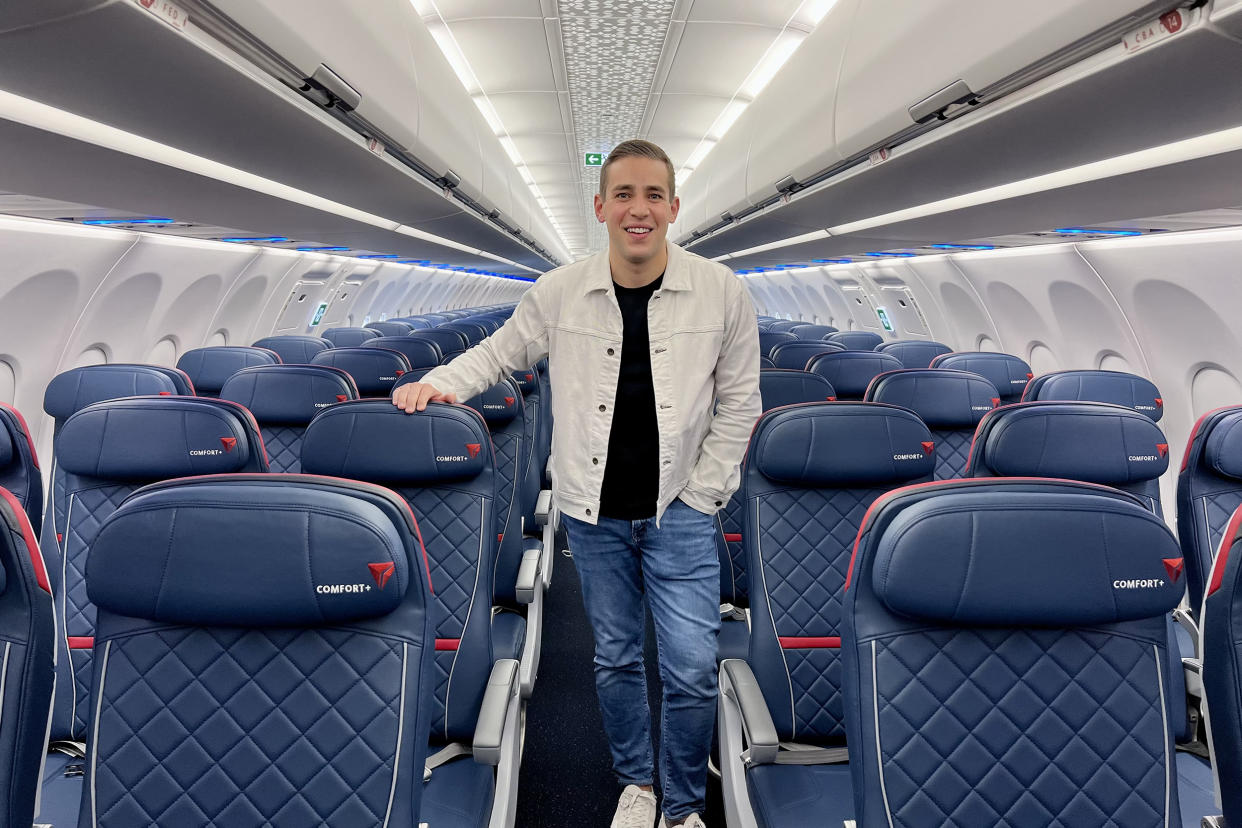Ask Mister Manners: Are airline passengers’ eating habits worse than ever?
Dear Mister Manners: I’ve recently started flying again after a long break from traveling during the pandemic. Is it just me or have passengers’ onboard eating habits gotten worse than ever? How do I avoid being that person?
(Mealtime with Mister Manners is a weekly column that delves into a smorgasbord of dining-etiquette dilemmas. Please submit your questions at the bottom of this page.)
Anyone seeking a sterling example of impeccable dining etiquette is best advised to look elsewhere than the skies. Shoehorned into impossibly tight seats on full-capacity flights, coach-cabin passengers throughout the U.S. are feeling more like an aughts commuter on the Tokyo Metro than wayfarers on a luxuriant journey.
When you consider the improbability that any passenger beyond first or business class will be served sustenance requiring a fork and knife, it’s no wonder travelers are taking matters into their own hands. Literally.
Like hikers tossing on a knapsack of provisions for an arduous climb, we are taking personal responsibility for our onboard nourishment and contentment. Tacos and a tablet for our youngsters; lox and a laptop for us grown-ups. Juggling all of this with aplomb from the discomfort of a middle seat and a tray table barely able to fit a MacBook Air? Good luck.
The difference in service is palpable even in the front of the aircraft. "I flew business from New York to Los Angeles in March 2020 and took the same flight on the same airline this month," said Zach Griff, a senior reporter for The Points Guy. His pre-pandemic menu featured “a choice of breads, a cheese plate, a multi-course meal and an ice cream sundae." Little more than two years later, his options had narrowed significantly: "No menu, just a pre-plated meal and no dessert."
The disappearance of dazzle
For members of generations older than millennials, this is all in stark contrast to the mouthwatering meal service of yesteryear. Julie Ann Festa, a New York-based flight attendant with three decades of experience at one of the nation’s largest carriers, recalls the glamor of serving dinner in the clouds during her earliest years in the industry, particularly in first class aboard international flights.

“On journeys to Brussels, London and Paris, just to name a few world capitals, we’d have a three-tiered cart with caviar, blinis and toast points,” she recalled. On the heels of the caviar would come another cart with fresh ingredients (including lobster) for salads prepared to order.
In movie-worthy scenes that could well have been titled "Steaks on a Plane," next up, flight attendants would carve an entrée such as chateaubriand, offering slices for each passenger’s liking from a cutting board.
“Next, we’d present a cheese tray with toothpick flags representing each selection’s point of origin,” she recalled. And don’t even get her started on the desserts or the flutes of Champagne arranged on a credenza resplendent with fresh roses. “It was beautiful. It all had a true restaurant feel.”
Shortly after the turn of the millennium, Festa began to see subtle changes: Shrimp cocktail vanished; plastic cups appeared. Nowadays, she wryly observes, “We’ve gone from having a selection that was quintessential soup to nuts to having just nuts.”
Even when passengers want to buy food onboard, they may still be out of luck, said Festa. “By the time we get to row 8 of main cabin, we are often sold out of sandwiches, fruit and other items for purchase,” she admitted.
The case for BYO
Owing to the scaled-back food service, the scarcity of à la carte sundries and the probability of a flight delay or cancellation, Festa is a big proponent of passengers’ bringing their own food on board.
As is Julie Melnick, founder of SkySquad, a company created to make the flying experience less stressful for passengers. “Traveling can be exhausting,” she says. “Being hungry makes it so much worse.”

Her start-up, founded in 2019, provides aid to travelers who need an extra set of hands at the airport. From single parents with children to silver-haired seniors, the company’s customers pay a flat fee for assistance with everything from printing boarding passes to checking bags, getting through security and ultimately, reaching their gate with enough food to keep them sated until they arrive at their destination. With a team of 79 security-cleared gig economy workers on the ready, SkySquad operates in seven airports nationwide.
Whether carting food from home or planning a Supermarket Sweep-worthy shopping excursion once inside the secure area of the terminal, the experts I interviewed offered several essential reminders for minding one’s dining etiquette once airborne.
The nose knows
"If you bring kimchi aboard and you're not on Korean Air, you are a horrible person," joked Richard Foss, culinary historian, lecturer and author of the 2014 book "Food in the Air and Space." "If you bring Époisses cheese and you’re not on Air France, the same applies."

Melnick herself recalled the plane journey when she delightedly tucked into a homemade batch of rice with a coconut curry. She was in her glory until a fellow passenger caught a whiff and gave her what she described as "an awful death stare that lasted the entire flight."
For anyone unable to resist the lure of cuisine that may lean to the pungent side — like a tuna sandwich or a hard-boiled egg — Griff advises asking for the blessing of your seatmates first.
Noise that annoys
Another sensorial violation passengers might commit is of an audio nature. With music cranked on their headphones, fliers can fail to realize the sonic reach of their chewing, lip-smacking and bag crinkling, said Festa.
A pouch of potato chips should not be munched on so mindlessly as to last half the flight. "In all likelihood, they’re watching a movie, not even realizing how slowly and loudly they are crunching. Eat it and be done with it," she implored — a sentiment she naturally keeps to herself.
Spills and chills
With the precarious prospect of a passenger reclining suddenly in front of you or encountering a bit of unexpected turbulence, passengers are best off being proactive to avoid spills — on themselves, or worse, on a seatmate. “Finish it fast,” advised Griff. Quickly quaffing a smoothie or coffee brought on board means "less opportunity for a splatter to land on me."

Griff also suggests making a small puncture in condiment packets while at altitude rather than tearing them open. This reduces the possibility of a pressure-related burst of ketchup or salad dressing. And for those who do unwittingly douse their row with an effervescent soft drink or an oily topping meant for a salad and not a shirt?
"It happens all the time," said Festa. "Own up to it, apologize and ring the call light. We’ll gladly come over to help."
Remaining seated during meal service
With aisles that are nearly as narrow as the rows themselves, aircraft are not designed for migration and mingling. Least of all during meal service.
"If you want to annoy the greatest number of people in the aircraft, choose a window seat, wait until the meal carts are already in the aisle and then decide you have to use the restroom at the very back of the plane," said Foss.
"You will push the two people sitting next to you into the aisle and in the way of the carts. And then you’ll have to squeeze past the flight attendants to get to the lavatory."
"People may think we just don’t want to move," said Festa. "The reality is, loaded beverage carts weigh anywhere from 75 to 125 pounds and are very difficult to push back and forth." She therefore advises passengers, when possible, to get up from their seats before or after meal service.
Compassion and consideration go a long way
"You are in a metal tube flying above the sky, in close proximity to many strangers," said Foss. "I don't care if you are the most experienced business flier in the world — on some level, you have discomfort you are suppressing, and it makes you more likely to be edgy and irritable."
Having the presence of mind to grant some behavioral leeway to one’s fellow passengers will go a long way. They may have all kinds of stresses and pressures that are not visibly obvious. "Just be kind, and hope they respond to you in the same way," added Foss.
Sharing is caring
In a moment I will long remember, shortly after the pandemic began to recede, I was seated in a row with a passenger who spoke only Spanish. As we exchanged pleasantries in her native language, she reached into her carry-on and produced two bright clementines, offering one to me.
As we each dropped our masks to enjoy a citrus fruit that tasted as fresh as though it had just been plucked from a tree and not a bag, I pondered the fact that even without plates, utensils or fine linens, we were two human beings partaking in the simplest and yet most satisfying of meals.
Through the power of food, a communication wall had fallen. All without lowering my tray table.
Submit your dining etiquette questions here:
This article was originally published on TODAY.com